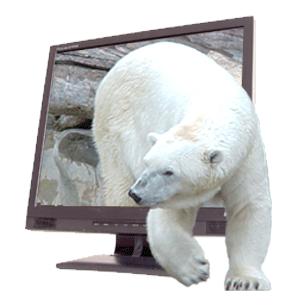Examine and describe structures and behaviours that help:
- individual living organisms survive in their environments in the short term
- species of living organisms adapt to their environments in the long term.
CP, DM, SI
| (a) |
Propose questions to investigate related to the structures and behaviours that help organisms survive in their environments (e.g., "What advantage are different beaks for birds?", "Why do owls turn their heads to look sideways?", "Why do rabbits change colour at different times of the year?", "Why do caribou migrate?", "Why do ground squirrels hibernate?"). |
| (b) |
Show interest and curiosity in learning about organisms' adaptations to different environments by journaling, participating in a nature walk, or sharing science-related information about adaptations (gathered from print or video resources or personal experience) with classmates. |
| (c) |
Describe examples of structures and behaviours, including seasonal changes, which help living things survive in their environments during the lifetime of the organism. |
| (d) |
Describe examples of adaptations to structures and behaviours (e.g., flippers, webbed feet, night-time vision, wide wings, camouflage colouring, migration, and hibernation) that have enabled living things to adapt to their environments in the long term. |
| (e) |
Explain how scientists use fossils and the fossil record as a source of information to identify changes or diversity in species over long periods of time. |
| (f) |
Suggest reasons why specific species of organisms have or might become endangered or extinct. |
| (g) |
Gather information from a variety of sources (e.g., Elder, traditional knowledge keeper, naturalist, textbook, non-fiction book, museum display, encyclopaedia, and website) to answer student-generated questions about the structural and behavioural adaptations of organisms. |
| (h) |
Compare closely-related animals that live in different parts of the world and propose explanations for any differences in their structures and behaviours. |
| (i) |
Research the advantages of particular structures or behaviours of organisms that suit different environments (e.g., how different bird beaks are best suited to obtain different types of food, how different types of foot structure are best suited for different environments). |
| (j) |
Suggest reasons to explain how results of similar and repeated studies of the adaptations of organisms may vary and suggest possible explanations for variations (e.g., independent studies may reveal different responses by polar bears to temperature changes or pollution). |

















Teachers should select portions of the program that relate directly to specific learning outcomes.













Microbiology gives us insight into the part played by bacteria, yeasts and fungi. Biochemistry reveals how the chemical processes in living organisms cause change. Entymology reveals the vital role of insects in the great cycle of decay. The video also explores the incredible science behind preservation, from new food packaging and chemical additives to UV radiation and osmotic pressures.



As readers progress through the book and explore the analogy to the Tree of Life, a proportionate section of the tree is shaded yellow to represent the place of each kingdom or branch within the world of living things. Once the author reaches the animal kingdom, further classification indicates the place of invertebrates and vertebrates. From there, branches on the tree represent fish, birds, reptiles, amphibians and mammals. Ultimately, one small yellow leaf indicates human's place on the tree. This analogy causes readers to reflect on the variety of life on Earth and on the impact humans have on all living species.

The book was compiled by and co-published with Saskatchewan Environment and Resource Management.

The author describes Ookpik's journey south. He sees things for the first time, such as trees. Natural surroundings are changing as Ookpik travels from the barren Arctic to the taiga and finally arrives at his destination in the Adirondack Mountains.
The author has included additional information on the snowy owl in the back of the book.

Below Zero activity guides are free to teachers attending a Below Zero workshop, often offered in conjunction with Project WILD workshops. These workshops provide an opportunity to experience the activities and to plan how to use them in the classroom. A modest registration fee covers workshop materials and expenses.



Project WILD activity guides are free to teachers who attend a Project WILD workshop. These workshops provide an opportunity to experience the activities and to actively plan how to use them in the classroom. A modest registration fee will cover workshop materials and expenses.





